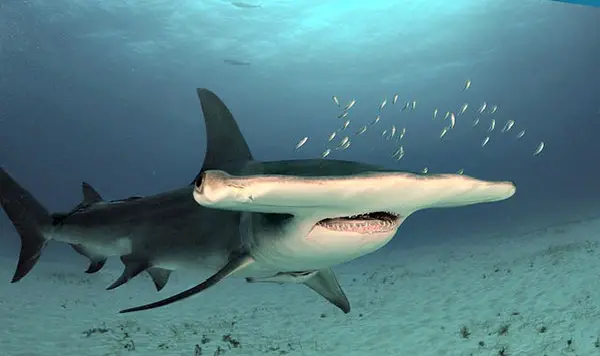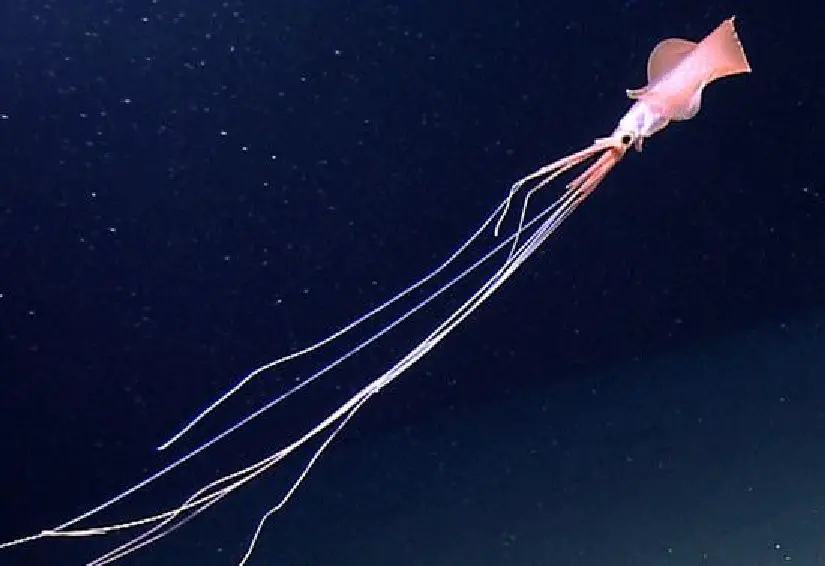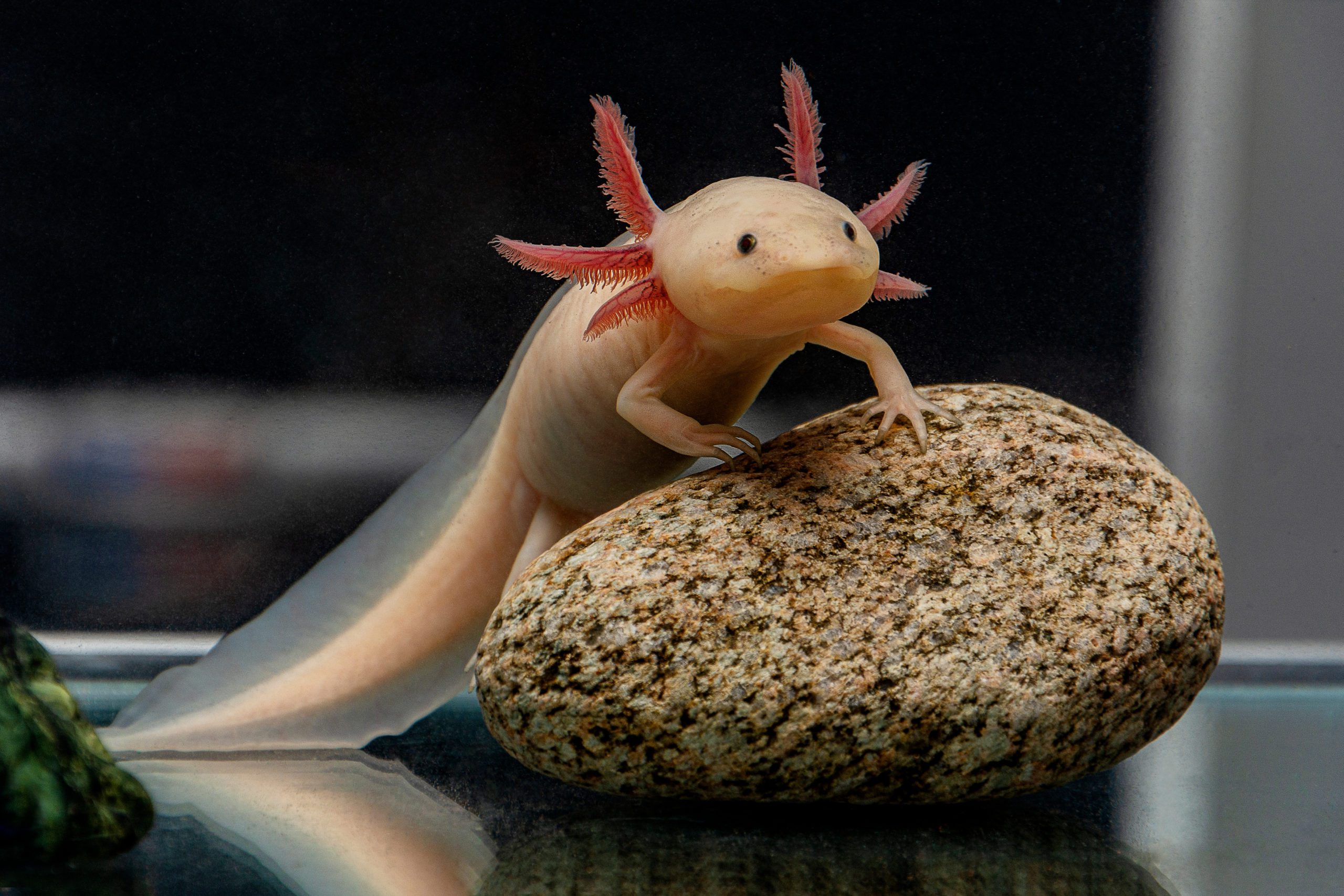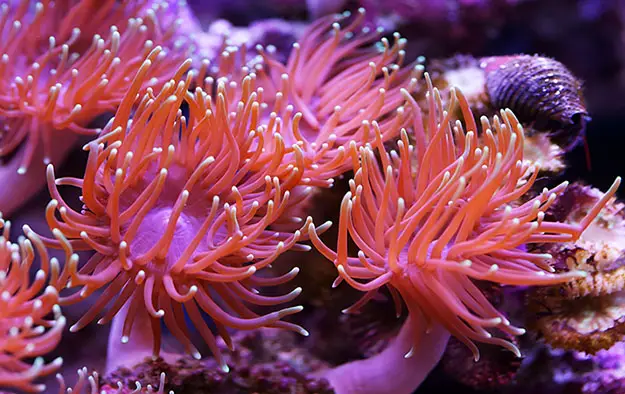Popularly called Angelfish
Genus: (Pterophyllum)
Family Cichlidae
Angelfish are one of the most famous aquarium fish, and add beauty to your aquarium as well. Although they aren’t easy to care for actually unless you have a full idea of their needs. Angelfish are generally peaceful. Nevertheless, they have Cichlids and can be aggressive toward one another, especially when trying to pair off or spawn. They aren’t aggressive; I’d call them opportunistic because they will eat everything that fits their mouth.
Every specie of angelfish of the cichlid family are freshwater fish, and they originate from South America. They are three species. They are particular shapes for Cichlids being greatly laterally condensed with round bodies and outstretched triangular dorsal fins and anal fins. Their special body characters allow them to hide among plants and roots, majorly on a vertical surface. These fish are continually streaked crossways, which occurs naturally; they also have coloration, which provides further camouflage. They are ambush by predators and prey on small fishes and macro-invertebrates. Every angelfish species usually form monogamous pairs. In the process of reproduction, eggs are typically laid on an aquatic log or a flattened leaf.
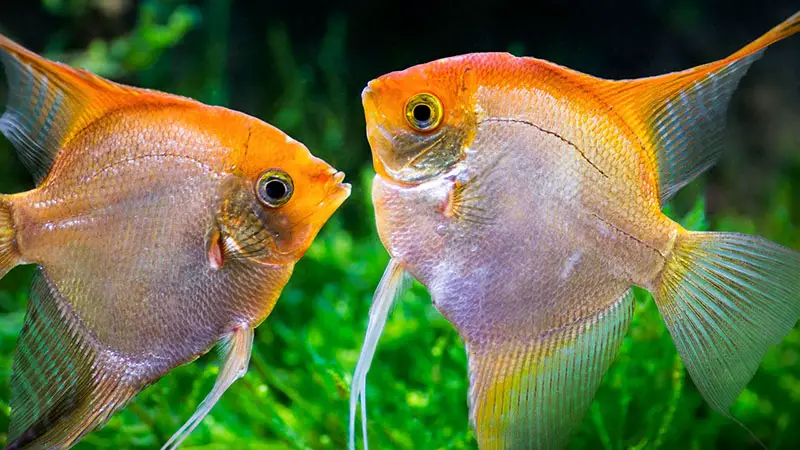
What you should know about the Angelfish
Angelfish are naturally carnivorous. So if you’re planning on getting Angelfish for your aquarium, then you’ve to feed them on the right foods as help them reach the optimum size and remain healthy. I’d suggest a daily feeding of flakes. They also eat small fishes like fry and tetras.
Angelfish can grow about six inches if they’re well- cared for about a year and a half old. If they’re kept in a not overcrowded tank, they can nearly reach up to 10 inches. However, it happens to be almost impossible.
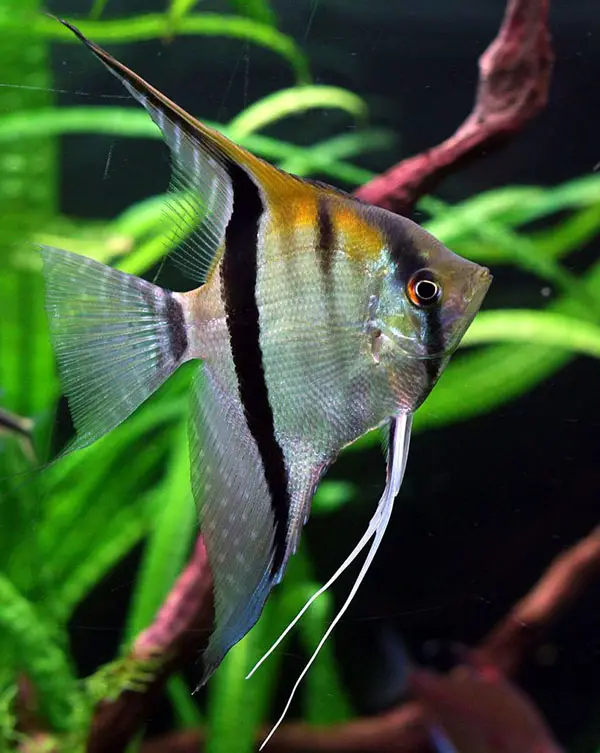
You can identify the difference between the male and the female fish unless the female is ready to procreate. Both sexes have an organ known as papilla, which is located at their ventral and anal fins.
A female fish deposited her egg in neat rows on a piece of underwater slate and leaned against a wall of their surroundings. At the same time, the male follows up behind her and uses his papilla to fertilize each egg, respectively. If the fertilization goes well, you will discover that the fry starts wiggling it tails about two days after, although they remain attached to the slate. Five days after, the fry will start swimming. After the seven days, they will begin eating on their own, then they’ve already absorbed the yolk sacks from their eggs.
The only way for you to be particular about both sexes when the female fish is gravid (she’s carrying eggs), her papilla becomes a bit enlarged and has a blunt tip. When a male angelfish senses a gravid female, his papilla also enlarges a bit but has a more pointed tip. Difference stated I guess!!!
You can anyway be sure on the Angelfish that lays eggs, whether female or male. When other angelfishes don’t respond to a gravid female, some more females or males aren’t interested in breeding and pairing up.
Angelfish can become aggressive as they mature. These fish can live with the different types of other tropical species when they are young because they become more territorial and aggressive as they grow. They become aggressive with each other majorly during reproduction times. A male fish can fight with another male over mates, and female fish can be aggressive when protecting their offspring from different male and female fish looking for prey. Angelfish prey on smaller fish while Angelfish predators ate larger and carnivorous fish. An excellent example of an Angelfish predator is “Betta.” Betta and angelfish can never put together in the same tank.
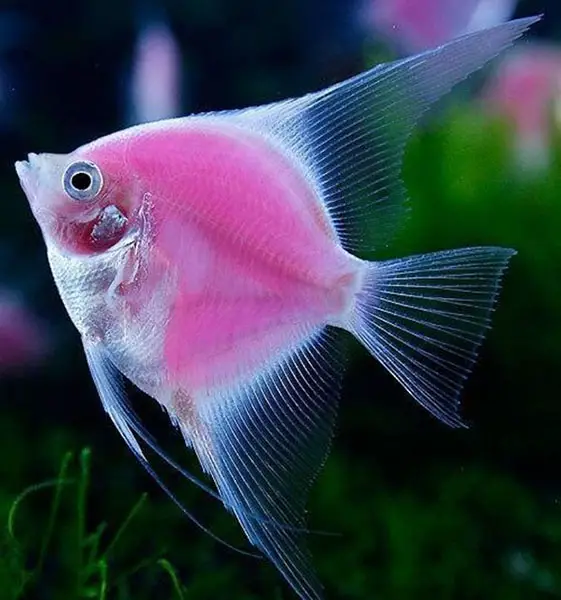
Fish are prone to ich, also known as ick.
Ich is a parasitic condition that can occur at any time the conditions in their surroundings are suitable, and these fish are highly prone to it. This parasite can spread from one fish to the other, and it can also exist in the tank/ aquarium on its own before affixing to a fish. You might be wondering what exactly can cause or contribute to ich infestation; they include; poor water conditions, overcrowding, and improper diet.
Types of Angelfish
There are a lot of species of angelfish that differ from each other by color and sizes. The following are some notable species among aquarium keepers.
Queen angel fish
This species is a marine species inhabit the coral reef ecosystem of warm water. Abundant in the western Atlantic Ocean. Their body color can be defined as blue to pale green with yellow rims on body scales. Juveniles are dark blue with a yellow lip. These species show a bit of aggressive behavior in captive conditions. Usually, they need a large tank for the aquarium. Sometimes, they fight with species of the similar genus in a tank. Larger individuals scrape stony and soft corals, sometimes colorful invertebrates.
The mature individuals feed basically on sponge species. Somehow mainly feed on plankton, algae, jellyfish, and tunicates. However, juveniles act as cleaners by feeding on the parasites of larger fish. If you have Queen species in your tank, you can feed them by giving meaty, and algae mixed fish foods.
Emperor angel fish
This is also a marine fish species of the Pomacanthidae family. They have a relatively large body size with other Angelfish species. Inhabit the coral reef ecosystems in the Pacific and Indian oceans. Juveniles and adult fish’s color pattern is completely different from each other. Juveniles have curved white and dark blue strips on the body. Dorsal and anal fins contain dark patches on electric blue background. The tail end is the pale blue color.
Adult Emperor has a black mask covering over the eyes. The mouth area is white in color. The body has painted with several contrasting colors. Emperor’s body is a blue color with horizontal bright yellow strips. The tail fin is a totally bright yellow color. The lower body area is dark color extending toward the tail fin. The edge of this dark area is margined with electric blue color.
koi angel fish
flame angelfish
french angelfish
blue angelfish
dwarf angelfish
altum angelfish
regal angelfish
peppermint angelfish
platinum angelfish


